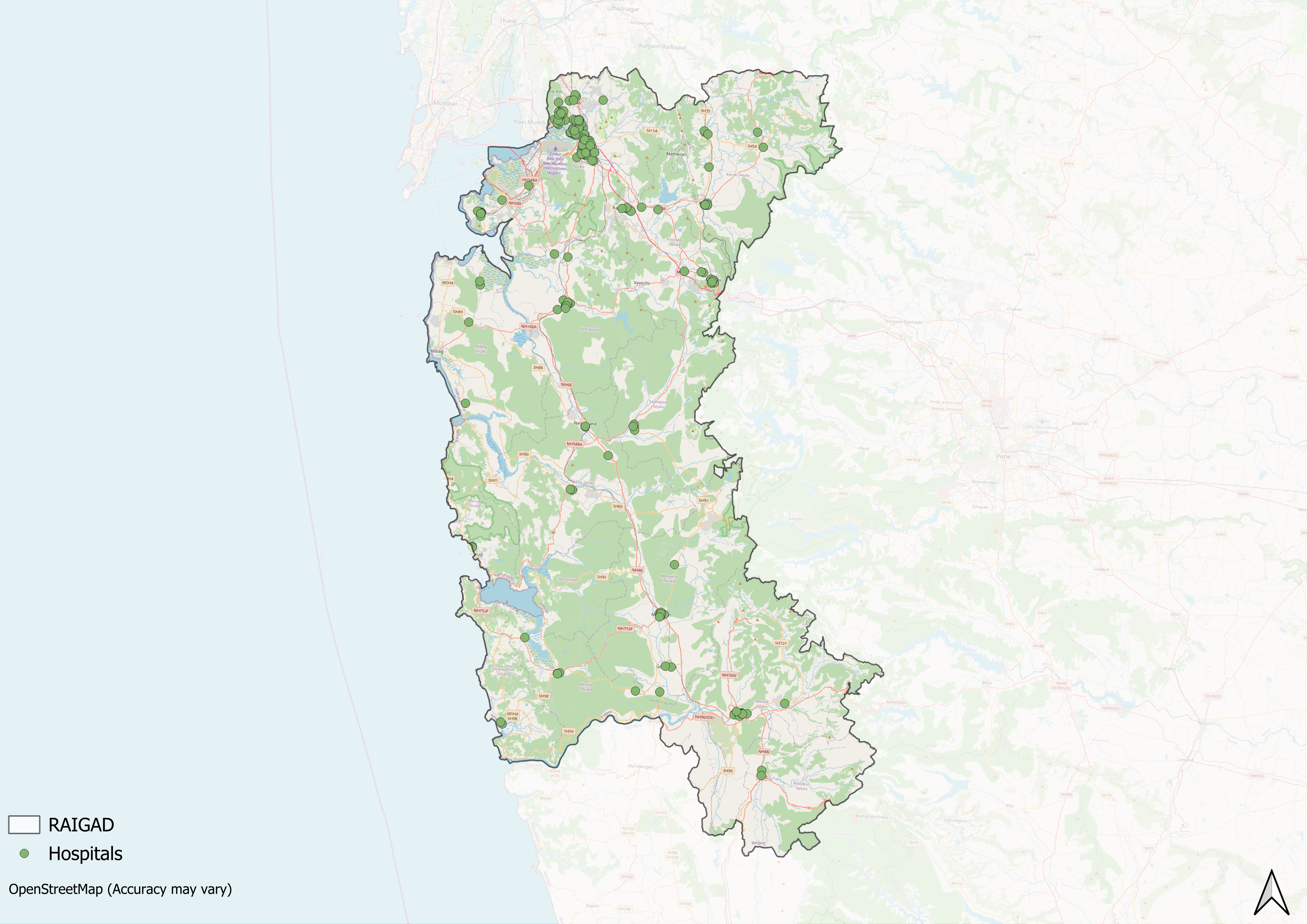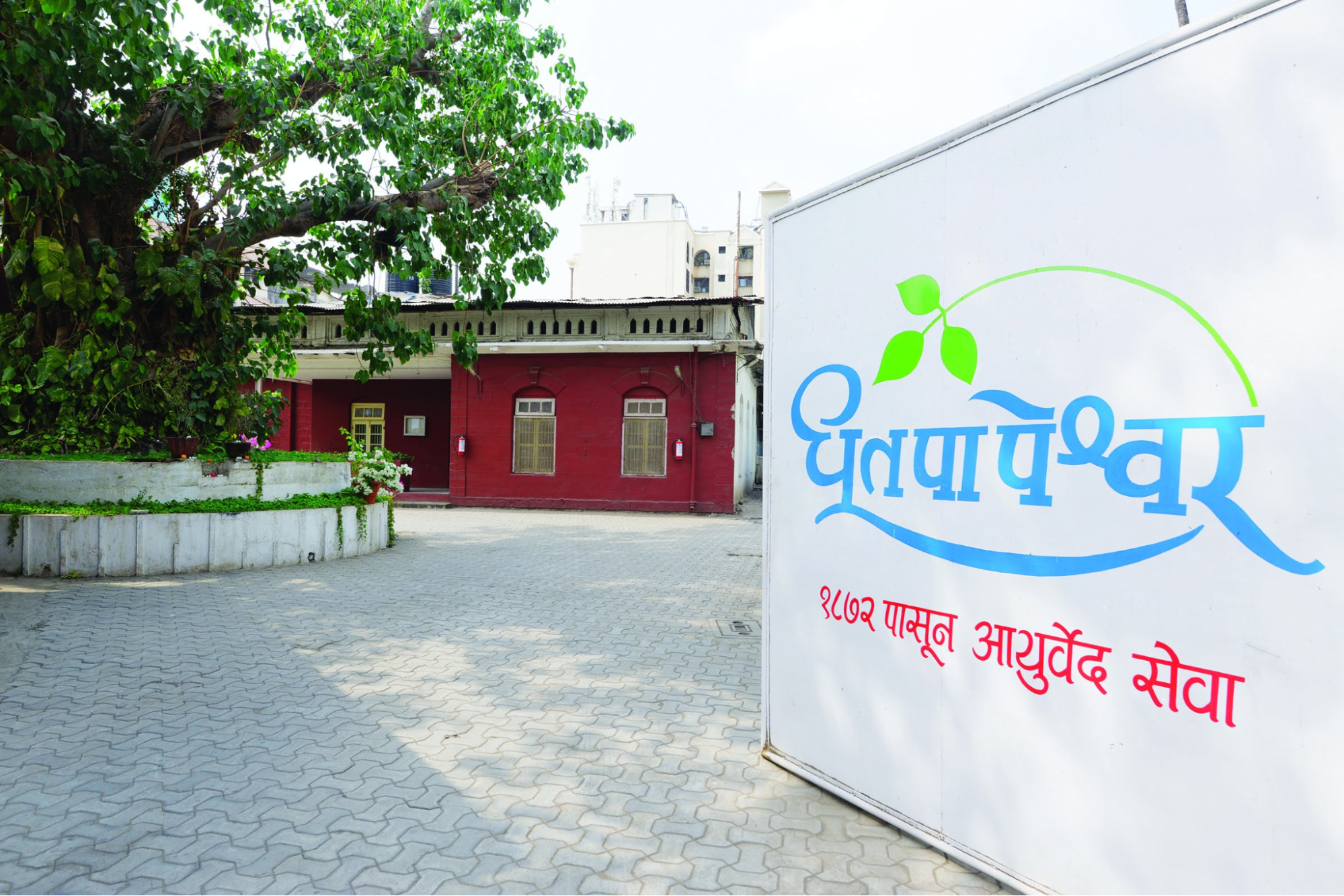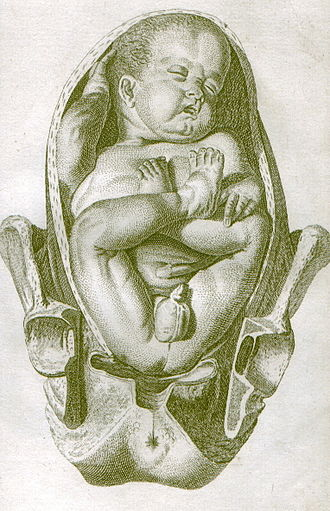Contents
- Healthcare Infrastructure
- Three Tiered System in the District
- Age-Old Practices & Remedies
- Dhootpapeshwar
- NGOS & Initiatives
- Anganwadi Sevikas
- Society to Heal Aid Restore Educate& the Swades Foundation
- Graphs
- Healthcare Facilities and Services
- A. Public and Govt-Aided Medical Facilities
- B. Private Healthcare Facilities
- C. Approved vs Working Anganwadi
- D. Anganwadi Building Types
- E. Anganwadi Workers
- F. Patients in In-Patients Department
- G. Patients in Outpatients Department
- H. Outpatient-to-Inpatient Ratio
- I. Patients Treated in Public Facilities
- J. Operations Conducted
- K. Hysterectomies Performed
- L. Share of Households with Access to Health Amenities
- Morbidity and Mortality
- A. Reported Deaths
- B. Cause of Death
- C. Reported Child and Infant Deaths
- D. Reported Infant Deaths
- E. Select Causes of Infant Death
- F. Number of Children Diseased
- G. Population with High Blood Sugar
- H. Population with Very High Blood Sugar
- I. Population with Mildly Elevated Blood Pressure
- J. Population with Moderately or Severely High Hypertension
- K. Women Examined for Cancer
- L. Alcohol and Tobacco Consumption
- Maternal and Newborn Health
- A. Reported Deliveries
- B. Institutional Births: Public vs Private
- C. Home Births: Skilled vs Non-Skilled Attendants
- D. Live Birth Rate
- E. Still Birth Rate
- F. Maternal Deaths
- G. Registered Births
- H. C-section Deliveries: Public vs Private
- I. Institutional Deliveries through C-Section
- J. Deliveries through C-Section: Public vs Private Facilities
- K. Reported Abortions
- L. Medical Terminations of Pregnancy: Public vs Private
- M. MTPs in Public Institutions before and after 12 Weeks
- N. Average Out of Pocket Expenditure per Delivery in Public Health Facilities
- O. Registrations for Antenatal Care
- P. Antenatal Care Registrations Done in First Trimester
- Q. Iron Folic Acid Consumption Among Pregnant Women
- R. Access to Postnatal Care from Health Personnel Within 2 Days of Delivery
- S. Children Breastfed within One Hour of Birth
- T. Children (6-23 months) Receiving an Adequate Diet
- U. Sex Ratio at Birth
- V. Births Registered with Civil Authority
- W. Institutional Deliveries through C-section
- X. C-section Deliveries: Public vs Private
- Family Planning
- A. Population Using Family Planning Methods
- B. Usage Rate of Select Family Planning Methods
- C. Sterilizations Conducted (Public vs Private Facilities)
- D. Vasectomies
- E. Tubectomies
- F. Contraceptives Distributed
- G. IUD Insertions: Public vs Private
- H. Female Sterilization Rate
- I. Women’s Unmet Need for Family Planning
- J. Fertile Couples in Family Welfare Programs
- K. Family Welfare Centers
- L. Progress of Family Welfare Programs
- Immunization
- A. Vaccinations under the Maternal and Childcare Program
- B. Infants Given the Oral Polio Vaccine
- C. Infants Given the Bacillus Calmette Guerin (BCG) Vaccine
- D. Infants Given Hepatitis Vaccine (Birth Dose)
- E. Infants Given the Pentavalent Vaccines
- F. Infants Given the Measles or Measles Rubella Vaccines
- G. Infants Given the Rotavirus Vaccines
- H. Fully Immunized Children
- I. Adverse Effects of Immunization
- J. Percentage of Children Fully Immunized
- K. Vaccination Rate (Children Aged 12 to 23 months)
- L. Children Primarily Vaccinated in (Public vs Private Health Facilities)
- Nutrition
- A. Children with Nutritional Deficits or Excess
- B. Population Overweight or Obese
- C. Population with Low BMI
- D. Prevalence of Anaemia
- E. Moderately Anaemic Women
- F. Women with Severe Anaemia being Treated at an Institution
- G. Malnourishment Among Infants in Anganwadis
- Sources
RAIGAD
Health
Last updated on 26 July 2025. Help us improve the information on this page by clicking on suggest edits or writing to us.
Raigad’s healthcare landscape, like many other regions across India, is shaped by a mix of indigenous and Western medical practices. For generations, local communities in Raigad depended on folk knowledge, Ayurveda, and Unani practices passed down through families, village vaidyas, and early local healers.
Much of the district’s organised healthcare system began to take shape in the late 19th century, when the British administration introduced government-run dispensaries in towns such as Pen, Mahad, and Alibag. Today, the district is home to a range of public hospitals, rural health centres, and private institutions, alongside long-standing home-based remedies and practices that continue to hold significance for many families.
Healthcare Infrastructure
Raigad’s healthcare infrastructure aligns with the broader Indian model, which is characterized by a multi-tiered system comprising both public and private sectors. Currently, the public healthcare system is tiered into primary, secondary, and tertiary levels. Primary care is provided through Sub Centres and Primary Health Centres (PHCs), while secondary care is managed by Community Health Centres (CHCs) and Sub-District hospitals. Tertiary care, the highest level, includes Medical Colleges and District Hospitals. This system has been shaped and refined over time, influenced by national healthcare reforms.
Supporting this network is a large cadre of Accredited Social Health Activists (ASHAs) who, as described by the National Health Mission, serve as “an interface between the community and the public health system.” These frontline workers play a vital role in reaching underserved areas and connecting families to essential services.


Three Tiered System in the District
The foundations of Raigad’s formal healthcare network can be traced back to the late 19th century. According to the colonial district Gazetteer (1883), three early dispensaries were set up in Pen, Mahad, and Alibag. These small government-funded centres were among the first organised efforts to offer medical help to local communities.
Since then, the district’s public health services have gradually grown to meet the changing needs of its population. Larger government hospitals now anchor the system. The Civil Hospital in Alibag is known for its maternity unit, which has been appreciated for providing postnatal care and basic support, such as hot water and healthy meals for mothers. The Panvel Hospital is another major facility, serving patients from nearby towns and villages. Smaller hospitals and health centres are spread across talukas like Shrivardhan, Mahad, Poynad, and Pen.
Over the years, the district has also seen the rise of private hospitals and institutions, often established through the efforts of local organisations, charitable trusts, and community initiatives. One notable development came in 1991, when the Mahatma Gandhi Mission Trust established the New Bombay Hospital in Kalamboli, adding a key teaching hospital and medical college to the district’s healthcare network. Located in an area with many working families and limited medical access at the time, the hospital offered services in medicine, surgery, obstetrics and gynaecology, eye care, and ENT, along with diagnostic labs for pathology, microbiology, and radiology. The hospital has also organised free medical camps in nearby areas such as Taloja and Ghote, expanding its reach to neighbouring communities.
![New Bombay Hospital, Kalamboli[1]](/media/statistic/images/maharashtra/raigad/health/new-bombay-hospital-kalamboli1-2cca30eb.png)
Raigad is also home to the Tata Memorial Centre in Kharghar, which brings together the Cancer Research Institute (CRI), the Clinical Research Centre (CRC), and the Centre for Cancer Epidemiology (CCE). This integrated approach to treatment, research, and prevention makes it one of the few facilities of its kind in India dedicated entirely to cancer care.
![Tata Memorial Center[2]](/media/statistic/images/maharashtra/raigad/health/tata-memorial-center2-4f02f6cc.png)
Age-Old Practices & Remedies
Historically, before the advent of Western health care systems or the three-tiered healthcare infrastructure that exists today, people in the district relied on and made use of indigenous knowledge and medicine for their well-being. When it comes to healthcare, India, for long, has been characterized by a pluralistic health tradition. Among the many medicine systems that have a long history in India and in Raigad, as locals say, are Ayurveda and Unani.
Dhootpapeshwar
Ayurveda continues to hold an important place in the district’s health landscape. Notably, Panvel, Kharghar, and Pen are home to respected hadvaidya (orthopaedic Ayurveda practitioners) and hospitals offering specialised treatments. One of the most well-known names in Ayurveda here is Dhootapapeshwar, which locals recognise as one of the oldest Ayurvedic enterprises in the world. Founded between 1839 and 1905 in Panvel by Vaidyaraj Shri Krushnashastri Puranik, Dhootapapeshwar is known for producing a wide range of Ayurvedic medicines and herbal decoctions.

The story of Dhootapapeshwar is significant for several reasons. Its founding during the colonial period offers insight into how local practitioners worked to preserve and formalise Ayurvedic knowledge at a time when Western medicine was gaining ground. It also shows the role of individual figures and families in sustaining traditional practices through local enterprise in the district.
This institutionalization of Ayurvedic knowledge represents one facet of Raigad’s medical heritage. However, besides formal institutions, one of the significant yet frequently overlooked aspects of healthcare traditions includes the role of age-old practices and home-based remedies. In India, as many say, indigenous knowledge and household remedies have long formed the basis of many family healthcare practices. These local remedies and healing methods have persisted through time through intergenerational transmission.
Many local customs are still followed by families today. For instance, when someone in the family has chickenpox, neem leaves are placed in the patient’s room and added to bathing water as part of the healing process. After recovery, it is common for families to visit a Mandir dedicated to Sheetla Devi (Devo od smallpox and other diseases) to offer thanks and prayers for continued good health.

Local healers and folk beliefs continue to shape care for other conditions as well. In Panvel’s Khanda Colony, a local practitioner is known for treating Herpes Zoster with traditional methods, which include asking patients to avoid non-vegetarian food for about forty days.
In some rural parts of Raigad, when someone has a sprain, they may turn to a Payalu (a person believed to have special healing abilities because they were born feet first). According to local belief, when a Payalu applies gentle pressure with their foot, the sprain heals faster.

Home remedies for common ailments remain part of daily life, too. Many families keep old preserved cow ghee, which is applied to the forehead, feet, and palms to help reduce fever. To treat pitha (heat boils), kokum is soaked in water, and the infused liquid is used to cool the body.
Even simple hair care routines carry traces of these older traditions: in the past, coconut milk made from grated coconut and water was applied to hair to prevent dandruff and add shine; a practice that continues in some households today, especially among older generations.
NGOS & Initiatives
The determinants of health and health outcomes, as the World Health Organization (WHO) elaborates, are not solely shaped by more than just medical factors and healthcare services. The organization uses the term “social determinants of health (SDH)” to refer to the “non-medical factors that influence health outcomes.” These non-medical factors can be sanitation, nutrition, community well-being, or, as the WHO outlines, “income and social protection,” “food security,” access to quality healthcare, and more.
While there have been ongoing efforts to strengthen Raigad district’s healthcare infrastructure, certain areas still face challenges, particularly in addressing these broader health determinants. In response, non-governmental organizations have emerged as vital partners, working alongside public health systems to develop innovative, grassroots-level approaches that bridge these gaps.
Anganwadi Sevikas
The Anganwadi system, launched by the Government of India in 1975 under the Integrated Child Development Services (ICDS), was created to address child malnutrition and hunger. Today, Anganwadi sevikas form a key part of the district’s local health network.
Anganwadi sevikas provide free vaccinations for infants, distribute medicines such as folic acid and calcium, and ensure expectant mothers receive necessary care, including tetanus toxoid immunisation. They visit households to identify pregnant women, newborns, and young children, monitor growth, and offer feeding advice to families. In rural communities, Anganwadi centres provide meals for mothers and children, addressing nutritional needs directly at the local level.
Beyond their regular duties, sevikas also help older residents access government schemes and organise community health camps and awareness sessions. Their work, locals say, remains central to improving maternal and child health in villages across Raigad.

Society to Heal Aid Restore Educate& the Swades Foundation
In 1988, entrepreneurs Ronnie and Zarina Screwvala, known for co-founding UTV Group and UpGrad, established the Society to Heal Aid Restore Educate (SHARE) to support rural development in Maharashtra and other parts of India. The organisation focused on improving living standards in under-served rural communities, including areas within Raigad district.
![Ronnie and Zarina Screwvala[5]](/media/statistic/images/maharashtra/raigad/health/ronnie-and-zarina-screwvala5-22eb9c8e.png)
In 2013, SHARE evolved into the Swades Foundation, adopting a wider development model covering four key areas: Health and Nutrition, Education, Water and Sanitation, and Economic Development. The foundation works through Village Development Committees and local partnerships to implement projects intended to be scalable and replicable in other regions.
During the COVID-19 lockdown, the Swades Foundation distributed grocery and daily essential kits to families affected by the sudden loss of daily wage work. These kits included cooking oil, sugar, spices, and pulses to supplement government rations of wheat and rice. Despite fieldwork challenges during the pandemic, the foundation coordinated deliveries through more than 1,000 village committees. It also provided cooked meals for frontline healthcare workers in the district during this period.
![Food and essentials kits prepared by the Swades Foundation for distribution during the COVID-19 lockdown[6]](/media/statistic/images/maharashtra/raigad/health/food-and-essentials-kits-prepared-by-the-swad_ISQO1v5.png)
Graphs
Healthcare Facilities and Services
Morbidity and Mortality
Maternal and Newborn Health
Family Planning
Immunization
Nutrition
Sources
Government of India. 1964. Maharashtra State Gazetteers: Raigad District. Ministry of Information and Broadcasting, Government of India.
M Choksi, B. Patil et al. 2016. Health systems in India. Vol 36 (Suppl 3). Journal of Perinatology.https://pmc.ncbi.nlm.nih.gov/articles/PMC514…
Maharashtra State Gazetteers. 1883 (reprinted in 1989). Kolaba District. Directorate of Government Printing, Stationary & Publications, Government of Maharashtra, Mumbai.
Mahatma Gandhi Mission Trust. "About MGM Trust." MGM Hospital. https://hospital-kalamboli.mgmmcnm.edu.in/mg…
National Health Mission (NHM). "About Accredited Social Health Activist (ASHA)."https://nhm.gov.in/index1.php?lang=1&level=1…
Social determinants of health. WHO. https://www.who.int/health-topics/social-det…
Swades Foundation. "COVID-19 Relief Initiatives."
Last updated on 26 July 2025. Help us improve the information on this page by clicking on suggest edits or writing to us.